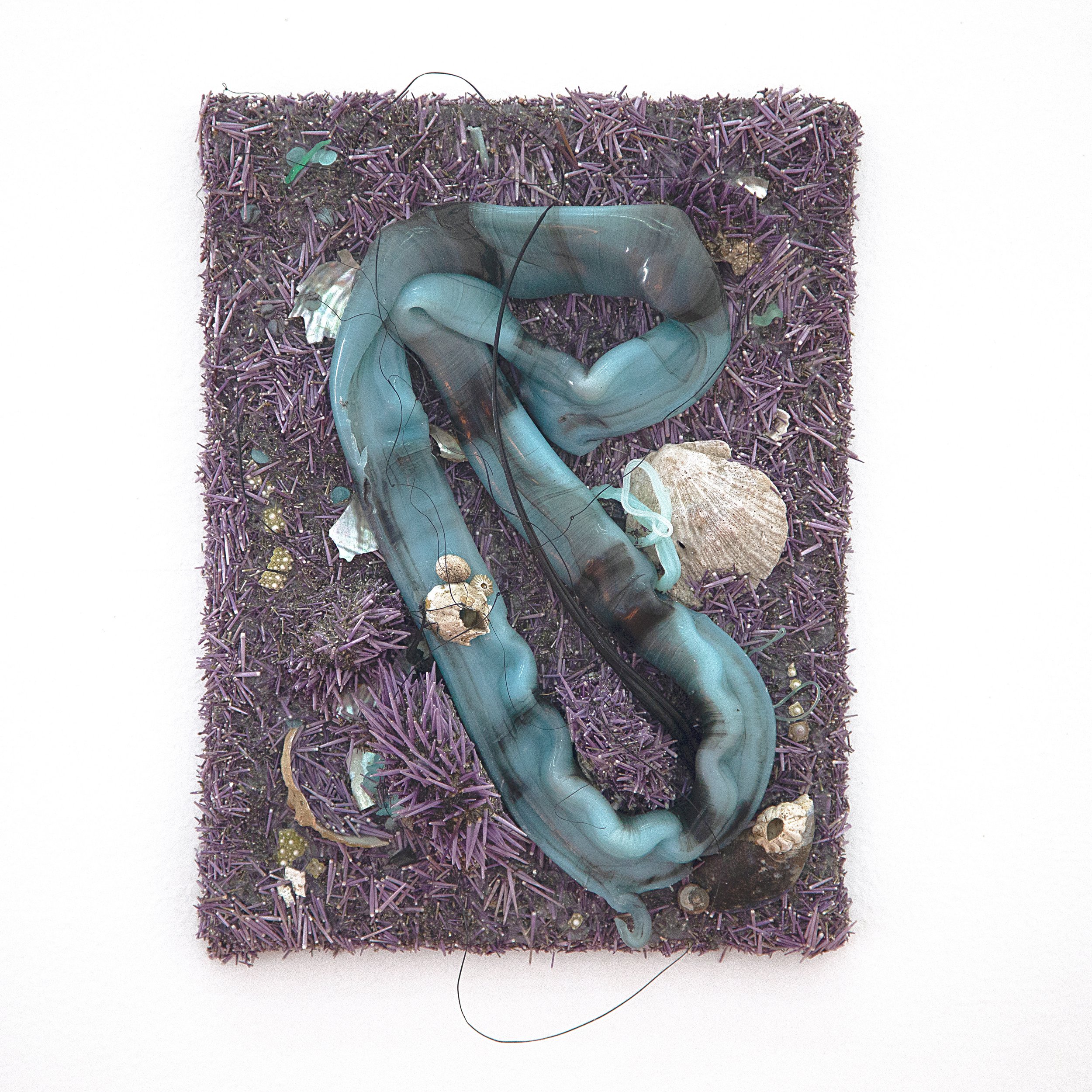FEMSA BIENAL XVI
XVI FEMSA BIENNAL 2020
New Figure, Morelia Michoacán.
In the context of the XIV Femsa Biennial, Livia Corona Benjamin presents a set of works that are part of Nueva Figura, her exploration of coastal and rural landscapes as they are marked by the agricultural and aquaculture industry in Ensenada, Baja California, her region of origin. In this way, the artist continues her ongoing research about land use and distribution; and her interest in the presumed absence of visual legacies in the Californias. Corona Benjamin’s project involves seashell waste that the artist recovers from clandestine shell dumps —a product of local bivalve and crustacean export businesses— and from the reject boxes of a local agro-industrial polymer company. Based on her work in her studio located in Ensenada bay, Corona Benjamin redefines these elements through laborious production processes. The different methods of the works presented (a collage, an installation, a mural and two monochrome paintings) and their respective displays of scale, both intimate and expansive, synthesize the dissonance between manual and industrial labor. Likewise, these methods make visible the particularity of the environment that engenders these materials, from which the artist departs for her investigation.
To compose the mural that covers one wall of the room, Greenhouse (2020) Corona Benjamin selected polymer shapes expelled by a machine that produces plastic film whose colors and densities serve specific functions in the agricultural production chain; among these are black and silver plastic mulch used to cover farmland row crops, the clear plastic covering of see-through agro-industrial structures, and blue and yellow fencing material used to attract insects and thus promote plant pollination. From a funnel of endless melted plastic extrusion, Corona Benjamin chooses shapes that show how the machine is capable of inadvertently reproducing the very essence of expression in Western painting, turning it into something mechanical and routine. By reflecting on the pictorial individualism of the West via brushstrokes created by an agriculture polymer machine, the artist echoes how agro-industrial mechanisms have reduced the role of the Mexican farmworker with mass production technology.
In another piece, Strawberry Rush (2020), which flanks the entrance door to the exhibition room, Corona Benjamin utilizes a green polymer used to make the green plastic litter basket which is the world standard for fresh strawberry packaging. Now melted and shapeless, the artist places them as a series of shelves — evoking a rococo decoration — that hold strawberries, with the purpose of visualizing forces and trade routes that through centuries and continents manage to domesticate certain plants, among other fruits, initially categorized as exotic, exclusive, and wild. The piece serves as an exploration of how the legacy of colonialism looms large in relationship to food products.
The aquaculture industry is explored through two ensembles, Left (2020) and Right (2020), which allude to another variation of painting from the second half of the 20th century: the monochrome surface. Although monochrome in the history of painting tends to be self-referential and generally does not refer to something concrete, the works of Corona Benjamin express a rigorous manual work that refers to a task, generally invisible, of removing the mollusk from the shell to their sale and consumption. This iteration of the work references geological modes of mining pigments and a playful reflection of Bernard Palissy’s ceramic seafood plates herein as a situation where the wildlife is mimicked by agro-plastic shapes now abundant in the farmed natural environment.
Landscape and Territories (2020) consists of a painting that evokes a coastal sunrise marked by geometric figures composed of pigments and triturated shells. All pigments were extracted and foraged by the artist in her personal quest to find a color particular to her native Ensenada, a city known more for its wine region and seafood production, and less for its contributions to art history. Corona’s materials have been chromatically separated based on their solar affectation and Corona Benjamin uses them to achieve a series of monochrome surfaces with different shades of purple, mother of pearl, and coral. Consistent with her interest in the possibilities of the photographic medium, in this piece the artist explores the effects of different types of lighting, where ultraviolet rays replace the light of the darkroom, in this case demarcating situations where the sun and the passage of time over the shells alternate their gradation. In this work, she also considers the use of archaeological shell middens—former dumps and deposits of marine organic materials by First Peoples. Sometimes these deposits are the only way to evidence ancestral presence in regions that lack recognizable ruins or ancient archeological structures.

















